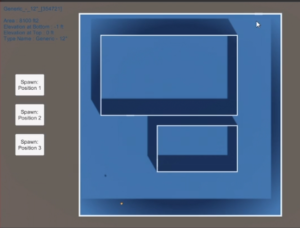June 15, 2020
Architecture AI Project
Revit Models in Unity
Introduction
We were exploring different methods for importing architectural models into Unity and decided to try Revit to see what it had to offer. The models are easy to move between softwares, and it also creates .cs scripts that Unity can use to provide some interactive data visualization when using the Revit models.
Parameters Import Script
This script creates a large list of strings. It does so by receiving an identification looking string, and uses a method to convert that string into its corresponding parameter information.
Example:private string ParamByName(string d){ switch(d) { case “Generic_-_12″_[354721]”: d = “Area : 8100 ft2 nElevation at Bottom : -1 ft nElevation at Top : 0 ft nType Name : Generic – 12″ n”; break; … } return d;}
Parameter Mouse Over Script
This script uses the name of this.gameObject to add information to the parameter list. The names of all the individual parts of the Revit model correspond to all the input strings found in the ParametersImport partner script. This shows that we most likely need to place this script on every piece of the model individually (since it’s only adding the one name of this.gameObject).
Adding this script to each individual gameObject present in the Revit model got it working. When mousing over the individual parts, it highlights that part with a color and displays some text information about that piece.
Revit In Unity Example
The following link shows an example of me using a Revit model in Unity with the corresponding scripts to get the Mouse Over action working.
My Showcase of Revit Model and Scripts
Summary
This is a nice included data visualization tool that can be included essentially for free. The information it provides could possibly be helpful, but the scripts are also very simple so they could easily be tweaked to include other information. All the information is also included in strings within the scripts already, so that data could possibly be extruded for other uses (if that turns out to be an easier way to get said data).

